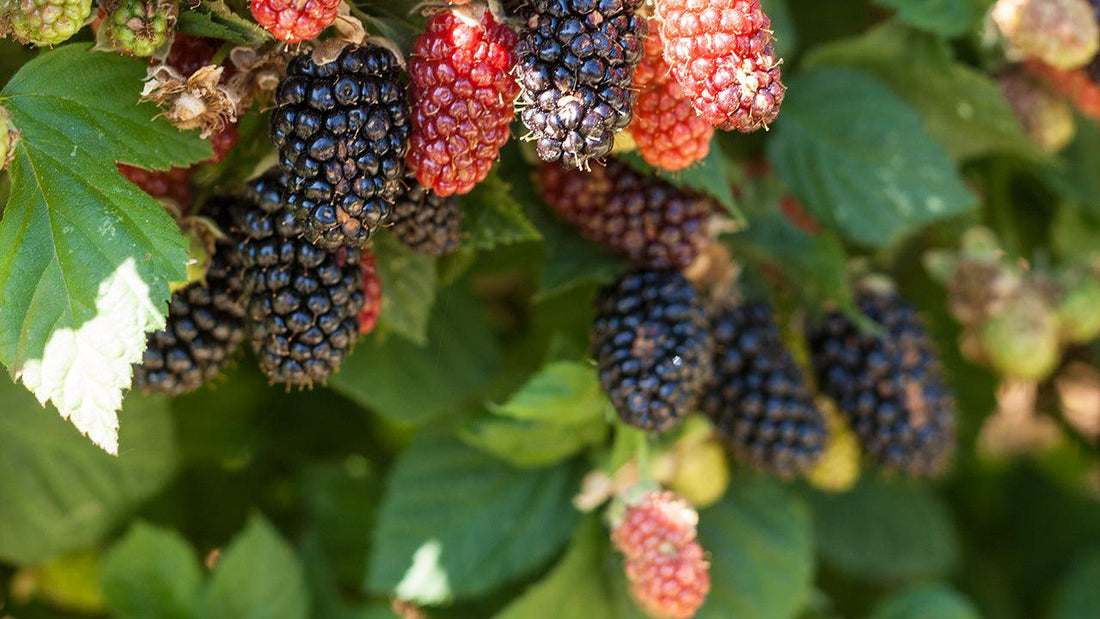Cane Berries: A Sweet Addition to Your Edible Landscape
Cane berries, such as raspberries and blackberries, are a delightful addition to any edible landscape. They not only provide a natural hedge but also reward gardeners with an abundance of sweet, juicy berries. To ensure optimal yields, proper pruning is essential. Pruning techniques vary depending on the type of berry and your growing region. Here's a detailed guide to help you master cane berry pruning and maintenance.
Raspberries – Summer-Bearing Reds
Summer Pruning
Summer-bearing raspberries require minimal summer pruning. The primary task is removing the spent floricanes (second-year canes) after they have produced fruit. Additionally, prune any suckers growing outside the designated growing area to maintain a tidy patch.
Dormant Pruning
Dormant pruning is conducted when the plants are fully dormant, typically between November and March in cooler regions. Start by removing any dead or damaged canes. Then, thin the canes within the bed, leaving about one healthy cane every 6 inches. Keep the bed width to a maximum of 18 inches for optimal air circulation and productivity.
Raspberries – Fall-Bearing Reds
Summer Pruning
Unlike summer-bearing varieties, fall-bearing raspberries produce fruit on first-year canes (primocanes). Therefore, no summer pruning is required.
Dormant Pruning
For maximum fall yields, prune all canes to the ground during the dormant season. Alternatively, for a smaller summer crop and a modest fall crop, leave the fruited canes in place. These canes will fruit again below the previous year's crop in early to midsummer. Choose the method that suits your harvesting preferences.
Black Raspberries
Summer Pruning
During summer, remove spent floricanes and tip prune the primocanes to about 3-4 feet. This promotes branching and prepares the plant for next season's growth.
Dormant Pruning
In winter, remove any dead or damaged canes. Cut back lateral branches to about 6 inches. Thin the canes to 5-10 per plant, retaining only the healthiest and most robust canes for the next growing season.
Erect Blackberries
Summer Pruning
Tip prune the primocanes to 4 feet during summer to encourage lateral growth. Remove the floricanes after they have finished fruiting.
Dormant Pruning
Shorten lateral branches to 12-18 inches. Thin the canes to about 10 inches apart, ensuring ample space for airflow and light penetration.
Semi-Erect Blackberries
Summer Pruning
Tip prune the primocanes to about 5 feet and secure them to a trellis or fence. Remove spent floricanes after fruiting to make room for new growth.
Dormant Pruning
During winter, thin the canes to 5-8 per plant. Remove any laterals growing lower than 3 feet and shorten the remaining laterals to 12-18 inches for better fruit production and management.
Trailing Blackberries
Summer Pruning and Care
Primocanes of trailing blackberries are left unpruned during the summer. In cold regions, you can leave the canes on the ground to protect them from winter injury. However, this approach may make the canes brittle when lifted in spring. In milder climates, train the new canes onto a trellis or fence, thinning to 6-10 strong canes while removing weak or damaged ones.
Dormant Pruning and Care
In regions with harsh winters, cover the trailing canes with mulch to prevent winter damage. Once spring arrives, lift the canes and tie them to the support structure. This preparation ensures healthy and productive plants for the upcoming season.
General Cane Berry Care Tips
- Mulch and Fertilize: Apply organic mulch around the base of your plants to retain soil moisture, suppress weeds, and regulate soil temperature. Fertilize in early spring with a balanced organic fertilizer to support vigorous growth and fruit production.
- Irrigation: Cane berries thrive with consistent moisture. Use drip irrigation to water deeply and reduce the risk of fungal diseases.
- Pest and Disease Management: Keep an eye out for common pests like cane borers and aphids. Remove and dispose of any infected canes to prevent the spread of diseases such as anthracnose or rust.
Conclusion
With proper pruning and care, cane berries can transform your garden into a productive and visually appealing space. Whether you're cultivating raspberries or blackberries, following these pruning techniques will ensure healthy plants and bountiful harvests year after year. So, roll up your sleeves, grab your pruning tools, and enjoy the sweet rewards of your labor.
Resource Area: Raspberry-Specific Pruning Insights
For gardeners growing raspberries, these tips optimize growth and fruiting for summer-bearing and everbearing plants:
- Pruning Techniques for Raspberries – Detailed guide on pruning schedules and methods by raspberry type.
- Summer Prune Your Berries – Encourages growth in raspberries and other berries through seasonal pruning insights.



11 comments
Where do olallieberries and boysenberries fall in your above categories?
Bruce, the floricanes are the canes that have fruit. Primocanes are the new canes that will shoot up really tall but have no fruit. They will produce fruit the following year.
Dan, Primocanes are the new shoots that are produced every year, floricanes are the two year old canes that produce the fruit. After they produce fruit they die back and the primocanes will produce the following year’s fruit.
I have “Prime-Jim” and “Prime-Jan” blackberries, which are said to be primocane-bearing. I have no idea how to tell a primocane from a floricane. I just trim back any over-tall canes or dead canes.
It would be nice if you explain what primocanes, flourocanes, and tip pruning are. Thank you for taking the time to gather and distribute this information. Appreciated.